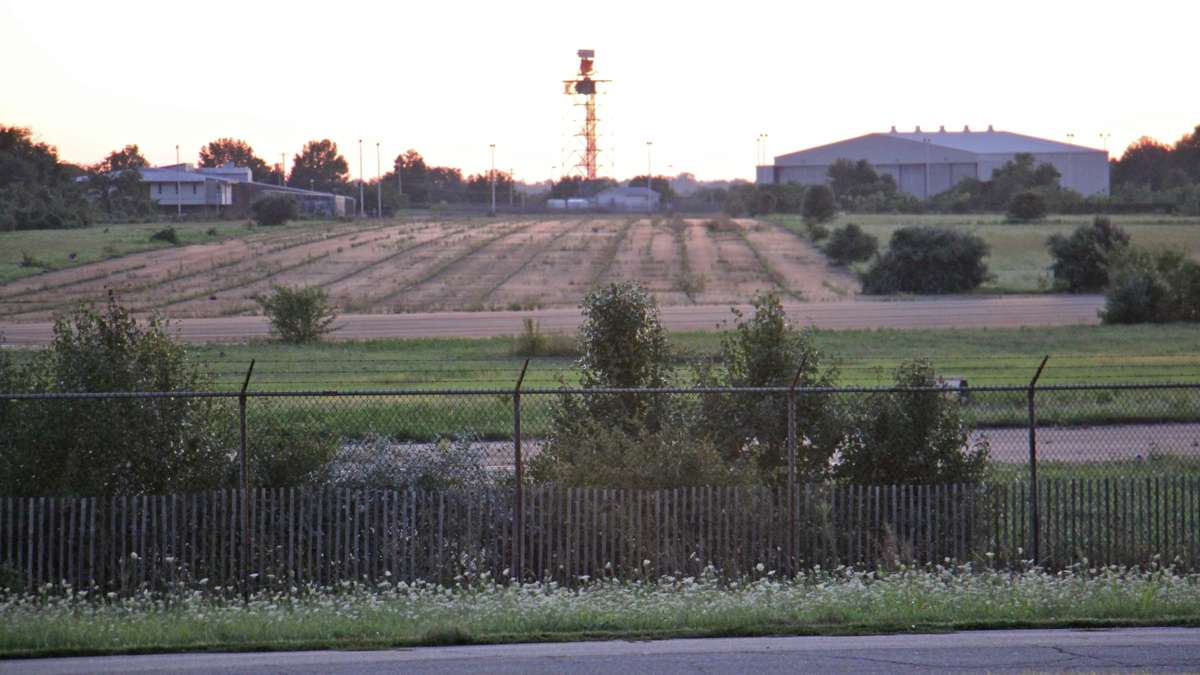U.S. court ruling opens door to more suits over contaminated water supplies

The Willow Grove Naval Air Station is one of two former military installations believed to be the source of toxic chemicals in well water around Horsham, Warrington and Warminster. (Emma Lee/WHYY)
After two years of legal setbacks, a federal court ruled this week that two families from Bucks and Montgomery counties can proceed with lawsuits asking the U.S. Navy to cover the costs of medical monitoring after years of drinking contaminated water.
“These people were seriously exposed to a toxic chemical and will benefit from medical monitoring that would enable them to get early detection of whatever adverse health consequences there were,” said Mark Cuker, attorney for Kristen, Charles, and Anthony Giovanni, who brought one of the lawsuits.
Both families live near former military bases, where the use of firefighting foam contaminated the groundwater with perfluorinated chemicals known as PFAS. The group of chemicals has been linked to health issues, including high cholesterol, thyroid problems, infertility, and an increased risk of cancer.
All told, some 70,000 residents in Horsham, Warminster, and Warrington townships have been exposed to contaminated water.
The Giovanni family, living across the street from the former Willow Grove Naval Air Station, filed suit in August 2016, claiming the water from their private well had a combined PFOA/PFOS level of 2.88 μg/L, well above the EPA’s threshold of 0.07 μg/L.
A year later, Dorothy Palmer and her son George, who have lived less than a mile from the Warminster Naval Air Warfare Center for 37 years, brought a similar suit. The water from their private well had a combined PFOA/PFOS level of 0.62 μg/L.
Both suits requested that the Navy provide funding for medical monitoring of the families’ health condition as a result of the toxic exposure. They also sought a large-scale health study to determine whether PFAS contamination caused unusual levels of illness in the community — and to what extent.
The lower U.S. District Court had ruled that the Comprehensive Environmental Response, Compensation, and Liability Act, also known as the Superfund program, protected the Navy from having to take action until it finished cleaning up the former bases. The bases were designated Superfund sites in 1997.
But this week, a three-judge panel from the 3rd U.S. Circuit Court of Appeals overturned part of that decision, saying the lawsuit over medical monitoring could proceed because that relief does not interfere with or alter the ongoing cleanup efforts. That means the case goes back to the lower court, which must evaluate the facts of the case.
“The federal government is not immune from suit for medical monitoring,” Cuker said. “That is huge.”
The government could also seek a rehearing en banc, where the case would be considered by a larger group of 3rd Circuit judges.
Or the government could take the case to the U.S. Supreme Court. Government lawyers have 90 days to decide whether to take that course of action.
The Navy did not respond to a request for comment.
At very least, a test case
Whatever direction the case goes, Maya van Rossum, leader of the Delaware Riverkeeper Network, which filed an amicus brief in the appeal case, said her organization was buoyed by the court’s decision.
“It will open the door and the opportunity for other exposed families, other exposed communities to go down this same path,” she said.
The court’s decision is only binding within the 3rd Circuit jurisdiction of Delaware, New Jersey and Pennsylvania. If a similar case were brought in Colorado, for example, the ruling could be persuasive, but the court there would not be required to follow its precedent.
“This was a procedural hurdle that is allowing the case to proceed,” said Mark Greenfogel, an attorney with Warren Environmental Counsel who was not involved with the case. “What will ultimately decide how many similar lawsuits follow will be the decision on the merits.”
The Giovanni and Palmer cases are individual cases, not class actions, which means rulings by the court can set precedent but do not apply to those not named in the suit. At the very least, Cuker said his client’s suit can serve as a test case.
“If the Giovannis establish a right to medical monitoring, then other people don’t have to litigate their case from scratch,” he said. “They can use that precedent.”
The statute of limitations under Pennsylvania law for this claim is 20 years.
Former Warminster resident Hope Grosse has been watching the case closely. She grew up near the Warminster base and developed melanoma at 26. She no longer lives in Warminster, and doctors have not formally concluded her disease was due to contaminated water. But, given the history of illness in her family — a father who died of a brain tumor, a sister with autoimmune disease, a daughter who is missing 17 of her adult teeth — she hopes medical monitoring becomes an option for her and for those in the community.
“I’m hoping my family would be able to be tested, and my kids would be able to be tested,” she said. “This is a big break in the ice for us.”
WHYY is your source for fact-based, in-depth journalism and information. As a nonprofit organization, we rely on financial support from readers like you. Please give today.





